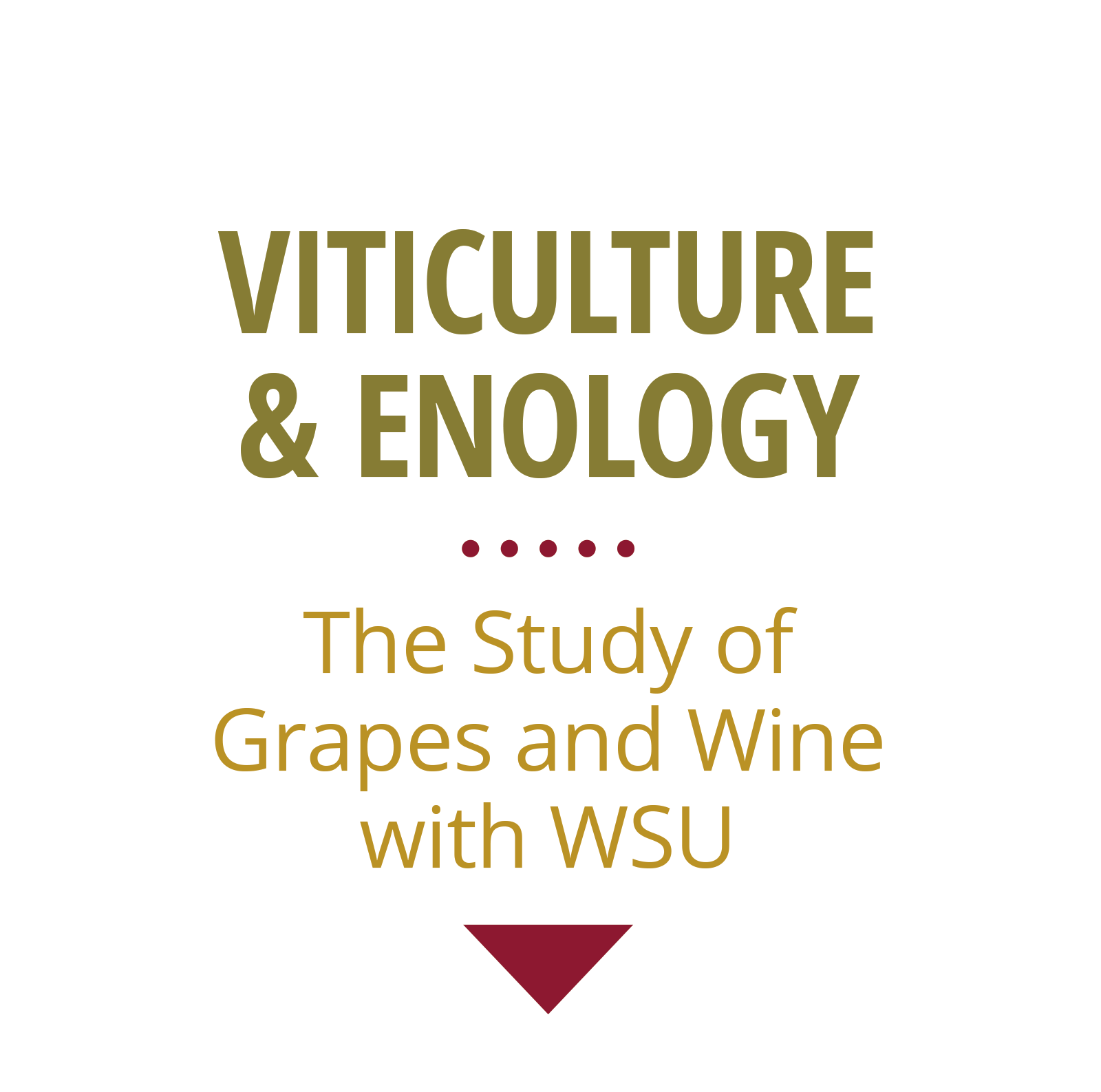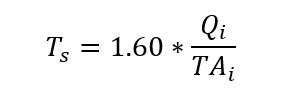This issue of VEEN was originally published as a .PDF in September 2024, and posted online. That issue is now archived, but accessible on the VEEN Archive webpage.

VEEN is curated by WSU Viticulture Extension. For questions on articles, or to request to submit an article in future issues, reach out to Michelle Moyer.
Table of Contents
- Spotted Lanternfly and Japanese Beetle Update
- Extra Irrigation During Heatwaves: Is It Necessary?
- Sap Flow Sensors in Grapevine Irrigation Management
- Digging Deeper Into Vineyard Soil Carbon
- Research Roundup
- WSU Viticulture and Enology Professional Certificates
- Smoke Exposure Resources
A Note from the Editor
From the summer that started in March, to a summer that disappeared in May, to a summer making up for lost time in from July to early September, I think most are ready to jump into fall, and to get that fruit off of the vine and into the winery! Harvest has already started across most of eastern Washington; typically variety ripening time lines appear to be overlapping, causing some creative harvest scheduling. While we were initially concerned about a low-crop year caused by the January 2024 freeze, it looks like many were able to partially to fully recover vineyard yields through proactive late winter and spring pruning practices. The cooler start to the growing season, coupled with denser canopies as a result of extra bud retention (and / or the pushing of latent buds in response to cold damage), created a few disease management headaches early on. But the mid-summer heat did kick in by early July, alleviating powdery mildew disease pressure for those who had good management programs in place up until that point.
This issue of VEEN has a focus on irrigation and soil health, timely topics as we wrap up major vineyard activities in preparation for winter (vines still need water!). If you can catch a break from harvest activities, we hope you enjoy this issue!
Michelle M. Moyer
Viticulture Extension Specialist
Professor of Viticulture
WSU Prosser IAREC
Spotted Lanternfly and Japanese Beetle Update
By Cassie Cichorz, WSDA Outreach Specialist
Spotted Lanternfly Update
Mid- to late summer is the time to be on the lookout for spotted lanternfly adults, but we’re heading into the time to look for their egg masses. Spotted lanternflies will lay egg masses that look like wet grey putty and hold 30-50 eggs. The masses turn dull and brown and can crack like dry mud. Look for egg masses in fall, winter, and spring on tree-of-heaven and outdoor surfaces like trees, bricks, stones, fences, grills, outdoor equipment items, firewood, potted plants, recreational equipment, and vehicles.
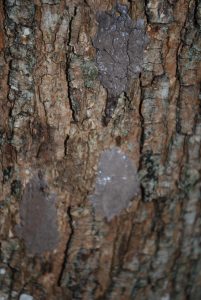
While not yet found in Washington, the lanternfly has been intercepted in California as a hitchhiker on goods coming from the eastern United States where it is established.
If you see tree-of-heaven, look for spotted lanternfly.
If you see spotted lanternfly or egg masses, take a picture, and report it!
Report online at: agr.wa.gov/lanternfly
Email: pest@agr.wa.gov
Call: 1-800-443-6684
In 2023 a state action plan was created to help guide the preparation for spotted lanternfly’s arrival. The Washington State Department of Agriculture (WSDA) is creating response toolkits to be shared with agencies operating during a response. The kits will include an instruction manual and collection supplies. WSDA is also working to build an outreach and educational program.

Currently, the program offers presentations, staffs booths during events, and shares insect mounts with stakeholders. In the coming months, WSDA plans to create pop-up banners, add downloadable resources to the website, create a short educational video, and send out stakeholder updates. If you want to stay informed about WSDA’s spotted lanternfly project, we encourage you to sign up for email updates or join our Facebook group.
Help us protect Washington from spotted lanternflies and the destruction they cause. Learn more by visiting WSDA’s spotted lanternfly webpage.
Japanese Beetle Update
WSDA is continuing to work on the multi-year eradication for Japanese beetle which includes treatment and trapping for Japanese beetle and establishing a quarantine to help prevent the invasive pest’s spread.
Treatment: WSDA treated several areas this spring in Wapato, a large area in Grandview, Sunnyside, Mabton, and Pasco where property owners in proposed treatment areas had provided consent. This is the first year Sunnyside and Pasco received spring treatments. Later this summer WSDA retreated areas that were catching multiple beetles. This fall WSDA will begin taking consent for 2025 treatments and encourages landowners to sign up for free treatments.
Trapping: In May, WSDA began placing 5,266 traps from southern Yakima through the Tri-Cities to monitor and catch Japanese beetles. As of late August, 22,308 beetles have been caught, with almost 400 in Pasco and one in Kennewick.
Quarantine: To help prevent spreading Japanese beetles through yard debris an additional yard-waste drop-off location was opened at Natural Selection Farms at 2525 S Emerald Rd. in Sunnyside. In August, WSDA finalized amendments to WAC chapter 16-470 which expanded the quarantine boundaries. WSDA held a webinar sharing information about these changes, necessary compliance agreements, and treatment consultation when necessary. You can watch the webinar online.
Help prevent the spread of Japanese beetle and support eradication efforts. Sign up for project updates and learn more by visiting agr.wa.gov/beetles.
Extra Irrigation During Heatwaves: Is It Necessary?
By Charles Obiero and Markus Keller, WSU Prosser
Temperatures above 95°F impair carbon production by grapevine leaves, impairing plant growth and fruit production. They also decrease the production of anthocyanins and volatile compounds in the berries, lowering fruit quality in both red and white wine grapes [1,2]. However, Washington’s vineyards are increasingly exposed to recurring heatwaves, defined as two or more consecutive days with maximum temperature above 95°F. In the summer of 2021, at the WSU Prosser Roza vineyard (AgWeatherNet ‘Roza.2’ weather station; https://weather.wsu.edu), there were 28 days between June 22 and Sept. 1 where temperatures exceeded 95°F, sometimes running for up to six consecutive days, and a peak of 112°F
Some grape growers apply extra water either in anticipation of, or during, heatwaves. The assumption is that extra water will prevent excessive plant stress. However, we do not know if this extra irrigation water improves vine growth and productivity, and the practice also comes at the risk of jeopardizing the benefits of the grower’s regulated deficit irrigation (RDI) program.
Experiment
From 2022 to 2024, we conducted field trials to explore whether the extra water applied during heatwaves is necessary or beneficial. Specifically, we investigated the impact of extra irrigation either before or during predicted heatwaves compared with standard RDI on vine water status, growth, productivity, and fruit composition in Cabernet Sauvignon and Riesling vines planted in 2010 at the WSU Prosser Roza vineyard. We used AccuWeather temperature predictions for Prosser to schedule our irrigation treatments (https://www.accuweather.com).
In these trials, vines were treated similarly before and after the forecast heatwaves. Our “extra water” vines were irrigated for either 24 hours (hr) the day before forecast heatwaves or 4 hr daily from noon to 4:00 pm during each day of the heatwave. Our RDI vines (control) did not have adjusted irrigation during the heatwaves. In 2022 and 2023, 24 hr of extra irrigation was applied only once at the beginning of the first heatwave, while in 2024, the 24 hr of extra irrigation was applied twice, once at the beginning of the first two heatwaves. We measured midday leaf water potential (Ψleaf) at the beginning of each heatwave and every two days during each heatwave, yield and yield components at harvest, and pruning weights in winter of the following year. We looked for any visual symptoms of heat damage on the canopy and fruit and analyzed the harvested fruit for total soluble solids (TSS), titratable acidity (TA), and pH. Actual temperature data during heatwaves were obtained from the Roza.2 weather station.
Heatwaves occurred in all three growing seasons of this field trial. In 2022, there were 25 days between June 22 and September 1 with maximum temperatures above 95°F sometimes running up to eight consecutive days and a peak of 105°F. The 2023 season had only 13 such days during the same period, a peak of 104°F and three continuous runs of maximum temperatures above 95°F being the most common. In 2024, there were 19 such days between June 22 and August 13 with continuous runs of maximum temperatures above 95°F lasting up to 10 days and a peak of 102°F. In all growing seasons, the heatwaves coincided with early fruit development in both varieties. Because we used temperature predictions to apply our extra water treatments, the 4 hr of extra irrigation was applied for a couple more days than the actual number of days with maximum temperatures above 95°F.
Compared with the standard RDI control, extra irrigation before or during heatwaves significantly increased plant water status in both varieties, but more so in Cabernet Sauvignon than Riesling (Fig. 1).
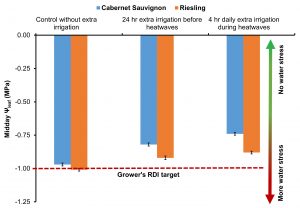
Further, 4 hrs of extra irrigation daily during heatwaves increased the plant water status more than 24 hrs of extra irrigation once before heatwaves. Given that heatwave events occurred during early fruit development, a period which coincided with growers’ overall goal of limiting shoot growth and balancing fruit yield and quality[3,4]; extra irrigation especially the 4-hr daily irrigation seemed counterproductive. In both varieties and all seasons, shoot growth did not stop, especially in vines that received 4 hr daily extra irrigation (Fig. 2).
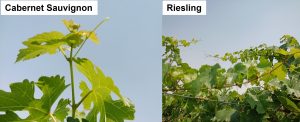
However, in 2024, when we did not irrigate to control shoot growth following the relatively cool and wet spring, vines with extra irrigation seemed to have incurred less heat-related injury compared with the control (Fig. 3).
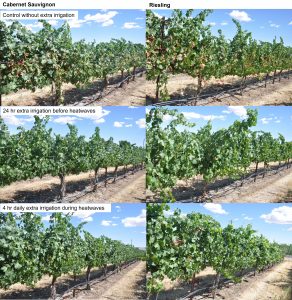
There was a trend of an increase in berry weight, yield and pruning weight with extra irrigation water applied during heatwaves in both varieties (Table 1). On average, extra irrigation before or during heatwaves increased berry weight by 8% compared with the control. In Cabernet Sauvignon, but not Riesling, both treatments increased yield by 16% and pruning weight by 20%.

In both varieties, neither treatment altered fruit TSS, TA, or pH compared with the control. On average, we harvested Cabernet Sauvignon at 24 °Brix and Riesling at 20 °Brix. We did not analyze phenolic compounds or aroma volatiles. However, judging from a recent study that showed changes in phenolic and volatile profiles in wine even with no impact of irrigation on basic fruit composition [5], those compounds might have been affected here as well.
Although vines with extra irrigation had less leaf injury due to intense heat during heatwaves, the amount of extra water used especially in the 4-hr daily extra irrigation combined with no significant impact on basic fruit composition at harvest begs the question of the necessity and sustainability of the practice. Furthermore, even though most payouts are still based on yield, we are unsure of the grower’s perception of the 10-14% yield increment against the amount of water used and other logistics that may be involved. Moreover, extra irrigation water may not always be available to grape growers due to declining supply and competing, increasing demand [6].
Other factors, such as soil structure and texture, the presence or absence of cover crops, rootstocks, or vine age, and hence root mass and canopy size may influence the available soil water and how vines respond to heatwaves. These might require further considerations when planning irrigation during heatwaves.
Summary
- Heatwaves can vary each growing season in frequency, duration, and intensity.
- Watering before or during heatwaves lowered plant water stress in Cabernet Sauvignon and Riesling vines compared with RDI without extra irrigation.
- Vines with extra irrigation suffered less leaf injury as a response to intense heat, but only when the control vines had not been irrigated for several weeks.
- Shoot growth did not stop in vines that received 4 hr of daily extra irrigation during heatwaves. This might jeopardize growers’ overall goal of using RDI as a canopy management tool.
- Extra irrigation before or during heatwaves did not change the basic fruit composition even though it led to larger berries and somewhat larger canopies. But if one is worried about heatwaves, some hours of judiciously applied extra irrigation ahead of forecast heatwaves might be sufficient to help the vines.
How much more water does the 4-hour irrigation set strategy use?
Compared to a single 24-hr extra irrigation set prior to a heatwave, the 4-hr daily extra irrigation sets used up to 4 times more water over the growing season. This is based on data from three years of research on a 9 x 6 ft vineyard, with two, 0.5 GPH drip emitters per vine. Overall, an extra 86,712 gallons/acre of water over the three years was used with the 4-hr daily sets during heat waves vs. 19,368 gallons/acre with single 24 hr pre-heatwave set. The longer the heatwaves, the more potential water may be needed if adopting the 4-hr daily irrigation strategy.
References
- Gutiérrez-Gamboa G, et al. 2021: DOI:10.1016/j.foodres.2020.109946
- Keller M. 2023. DOI: 10.5344/ajev.2023.23024
- Casassa LF, et al. 2015. DOI: 10.3390/molecules20057820.
- Keller M, et al. 2016. DOI: 10.5344/ajev.2016.16032
- Diverres G, et al. 2024. DOI: 10.5344/ajev.2024.23073
- Wagner AM, et al. 2021. DOI: 10.3390/w13192608
Acknowledgment
This work is supported by the USDA Northwest Center for Small Fruits Research and the Washington State Grape and Wine Research Program. We thank Steven Jachym and Zilia Khaliullina for their technical support.
Sap Flow Sensors in Grapevine Irrigation Management
By Shafik Kiraga, Srikanth Gorthi, R. Troy Peters, Lav R. Khot, and Markus Keller, WSU Prosser
Sap is the fluid that circulates within plant’s vascular system, particularly in the xylem and phloem tissues. Sap flow sensors measure the vertical movement of this fluid. While these measurements represent plant transpiration (water use), how can we use this data in a practical way for irrigation management?
Understanding Evapotranspiration
Evapotranspiration (ET) is the combined loss of water through soil evaporation (E) and plant transpiration (T). Throughout the growing season, ET can vary based on the weather, surface soil moisture, root zone soil moisture, plant canopy cover, crop growth stage, crop health, crop water stress status, type of irrigation, and the employed irrigation scheduling method. Generally, the goal of irrigation is to apply water to replenish what has been lost due to ET. But this ET-based approach may not be appropriate for all grapevine production systems, as cropping goals and grape variety being grown can influence how much water is actually needed to produce the quality, and quantity, or grapes desired.
Why Use Sap Flow Technology for Vineyard Irrigation Scheduling?
Traditional irrigation management involves setting water application thresholds and activating irrigation using information from soil moisture sensors [1]. While this approach can be effective, questions on whether soil measurements indicate the vine water status remain unanswered. Plant-based indicators for vine water status/use are highly desirable. Quantifying temporal vine water status requires continuous monitoring, and sap flow sensors can do this.
Sensor Installation
Several studies have reported sap flow measurement techniques and installation procedures [2,3]. Sensors’ manufacturer websites also offer pertinent details (e.g., https://www.treetoscope.com/). In grapevines, sensors can be installed on either the trunk or a shoot (Fig. 1), depending on the sensor design.
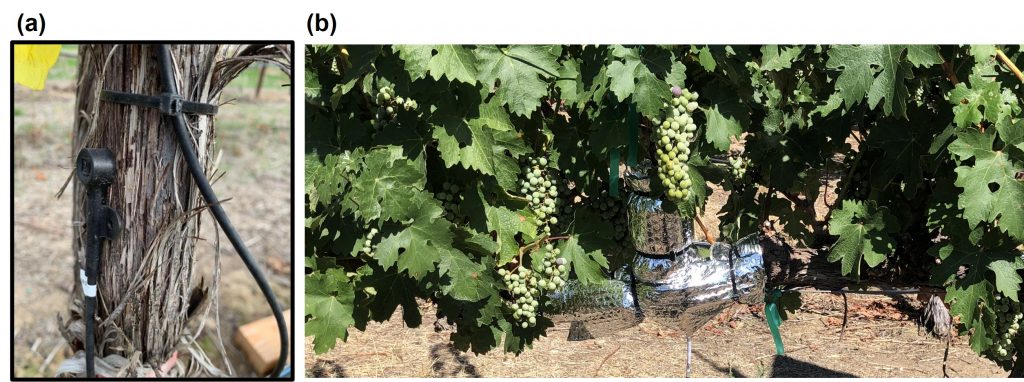
Sensors installed on the trunk are often needle-shaped and installed at approximately 12 in above the ground. You will need to drill a hole in the trunk, with the length and inner diameter equal to those of the needle-shaped sensor. The sensors installed on the shoots consist of a heating sleeve wrapped around the shoot (e.g., https://dynamax.com/). We recommend working with a specialist from the company supplying the sensors for proper installation to ensure accuracy. During installation, additional coverage with aluminum foil or insulation may be used to protect the sensors from excessive temperature fluctuations.
How Many Sensors Do You Need?
Several factors determine the number of sensors needed in a vineyard, and where they should be located. These include the site topography, soil variation, historical vineyard management, vine growth stage, and the block size. A high-density of sensors is not always needed. For example: grapevines with similar canopy sizes likely transpire at similar rates. As such, if you have two different blocks of the same variety, and are trained to the same trellis design, and irrigated similarly, with similar canopy coverage, you can assume that the transpiration rates in both blocks are comparable. This assumption also applies within a single vineyard block where the canopy cover is nearly uniform. In such cases, a single sensor would be sufficient to provide information across these blocks. However, if there is non-uniformity in the canopy cover within or across the blocks, it is advisable to have sensors in locations that represent these different canopy covers. For those who like data, installing sensors at multiple locations can also help reduce measurement variability caused by external factors such as solar radiation and wind speed that influence transpiration. Avoid installing sensors at the edges of the vineyard where water use is quite different from the majority of the vines away from the edges.
Converting Sap flow Data To Something Useful
Raw sap flow data (Fig. 2a) represents hourly trends of volumetric sap flow rate (gal/hr); which is the volume of water lost from that vine. The variations in sap flow (Fig. 2a) could be due to factors that affect sap flow movement, such as weather and plant water status. The raw data can be converted to estimate seasonal trends of transpiration (Fig. 2b).

To compare vine water use data from a sap flow sensor to rainfall or irrigation amounts, the volumetric sap flow can be scaled to transpiration as inches per hour or day (in/hr or in/day). The ground area can be calculated by multiplying the vine spacing and the row spacing. The scaled transpiration represents the water lost through the instrumented plant during the given time (per hour or per day). Equation 1 shows a simple formula that you can use to convert sap flow sensor data to transpiration.
Equation 1:
Where Ts is transpiration (in/day/ft2), Qi is sap flow of the ith vine (gal/day), TAi is the vine cross-sectional area (ft2).
Example:
- The vineyard is on a 6 ft × 9 ft Vine × row spacing
- Raw sap flow value for an instrumented vine is: 4 gal/day
This value indicates that 0.12 in of water was lost from the vine through transpiration on that day. If the vineyard is managed uniformly, with similar irrigation practices, and the vines are of the same height and maturity, this value can be used to manage irrigation across the entire vineyard. In the case of multiple sensors installed in the vineyard; the water use should be calculated per sensor and then averaged.
Tracking Vine Water Stress
Tracking vine stress is desirable for: a) maintaining the vines under a desirable stress level, and b) reproducing the preferred irrigation strategies across multiple seasons. For this, monitoring the weather and vine water use simultaneously is desirable. With these data, the vine water stress index (WSI; Fig. 3) can be determined as a threshold for triggering an irrigation event based on the desired irrigation frequency. Equation 2 below is the formula for calculating WSI:
Equation 2:
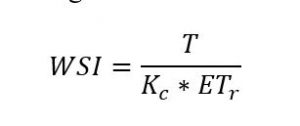 Where T is the transpiration from a sap flow sensor (inches/day); ETr is grass reference evapotranspiration (inches/day) and can be found from data of your nearby AgWeatherNet (https://weather.wsu.edu/) station; Kc is a crop coefficient that is specific to the vine and that vine’s growth stage and is determined from tables [4]. In practice, when WSI is at 1, the vine is transpiring at its maximal level, whereas when WSI is at 0, the vine is no longer transpiring (dead or dormant). This value can be used in practice to control irrigation strategies in vineyards. Figure 3 shows the trend of WSI over a growing season using sap flow sensors data.
Where T is the transpiration from a sap flow sensor (inches/day); ETr is grass reference evapotranspiration (inches/day) and can be found from data of your nearby AgWeatherNet (https://weather.wsu.edu/) station; Kc is a crop coefficient that is specific to the vine and that vine’s growth stage and is determined from tables [4]. In practice, when WSI is at 1, the vine is transpiring at its maximal level, whereas when WSI is at 0, the vine is no longer transpiring (dead or dormant). This value can be used in practice to control irrigation strategies in vineyards. Figure 3 shows the trend of WSI over a growing season using sap flow sensors data.
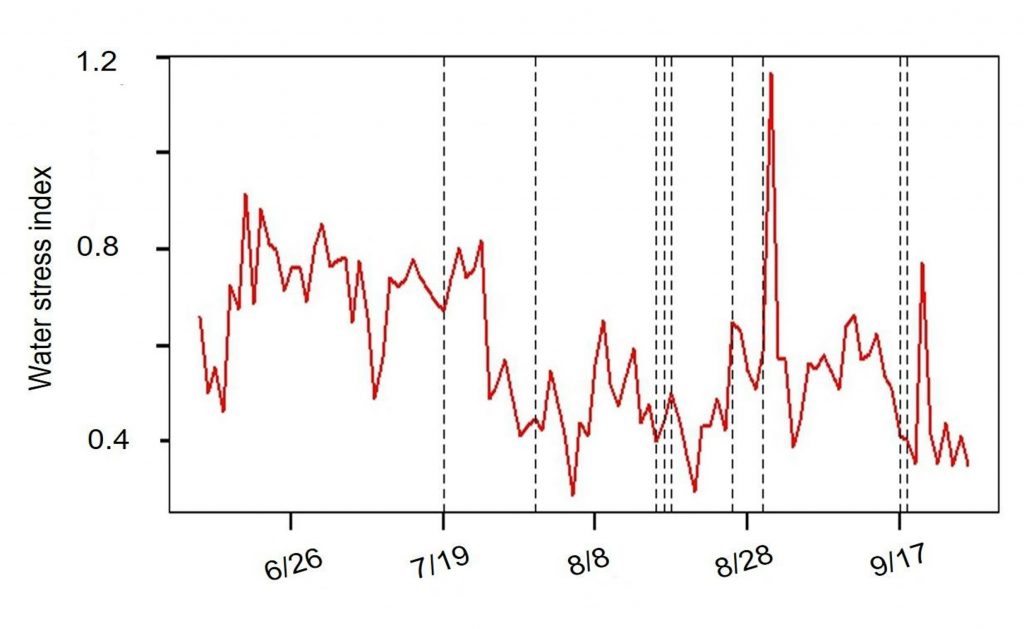
Quantifying Seasonal Water Use
For the benefit of vineyard management, it is better for the water to be used by the plant than for it to simply evaporate from the soil surface or, worse, percolate down the soil profile. In one vineyard experiment, we limited the wetted area for a few vines (deficit irrigation) and doubled that area for another set of vines (full irrigation). We monitored the vine water use with sap flow sensors (Treetoscope, Israel)over different periods (Fruit set to veraison and veraison to harvest) in the season. The vines with a limited wetted area consumed 3.63 in and 4.35 in before and after veraison, respectively. The fully irrigated vines consumed 4.1 in and 5.1 in, respectively. Such values are relevant for irrigation planning as it gets easier to estimate the quantity of water your vines consume in a particular period of the season.
Considerations for Sap Flow Measurements
Sap flow sensors aid in quantifying vine water use (transpiration) at the level of both individual vines and entire vineyards. However, there are several considerations for their effective use:
- Installing multiple sensors may be necessary to fully understand vineyard water use.
- Vine capacitance (reversible water storage in the trunk and roots) can cause time lags between sap movement in the vine trunks and transpiration from leaf surfaces.
- Insulating sensors with aluminum foil help minimize the influence of environmental factors like solar radiation and relative humidity on sensor measurements, leading to more accurate readings.
- Some sensing probes are inserted into the vine trunk, which can be destructive and may also facilitate disease transmission.
- Reliable field transpiration estimates might require additional plant attributes, such as trunk diameter and leaf water potential, to accurately relate individual sap flow measurements to field transpiration.
Acknowledgments
The ongoing projects are funded by USDA NIFA and the Washington State Grape and Wine Research Program. The authors thank Dr. Claudio Stockle, Dr. Jake Schrader, and the AgAID Institute members Dr. Paola Pesantez and Dr. Ananth Kalyanaraman.
References
- Peters, T. VEEN Spring 2011. Irrigation Sensors for Washington Vineyards. Viticulture and Enology Extension News (VEEN).
- Braun, P., & Schmid, J.1999. URL: https://www.jstor.org/stable/42950560
- Mancha, LA, et al. 2016. DOI: 10.17660/ActaHortic.2017.1188.31
- Evans, RG, et al. 1993. DOI: 10.1016/0378-3774(93)90035-9
Digging Deeper Into Vineyard Soil Carbon
By Devin Rippner (USDA-ARS), Elizabeth C. Gillispie, R. Troy Peters, Markus Keller and Michelle Moyer, WSU Prosser
What is Soil Carbon?
Carbon is fundamental to life and is one of the building blocks of all organic matter. Carbon is also a vital component of soils and plays a key role in soil health and function[1]. In agricultural soils, carbon typically accounts for 0.5-5% of a soil’s dry weight [3].
Soil carbon can be broken down into two groups, organic carbon and inorganic carbon [2]. Soil organic carbon (SOC) is a complex mixture of organic compounds, though it primarily comes from the decomposition of living things. SOC typically accumulates faster when there is sufficient soil moisture for maximum plant growth during most of the year, such as in humid climates that enable significant plant growth. Soil inorganic carbon (SIC) is composed mostly of carbonates like calcium carbonate (lime) and accumulates in soils where evaporative demand exceeds water movement to groundwater, such as in arid and Mediterranean climates.
How is Soil Carbon Distributed in Eastern Washington Vineyard Soils?
Most vineyards in Washington are located on the east side of the Cascade mountain range, where soils tend to be young (minimal weathering), coarse textured, and with an arid climate. These conditions are common among many of the premier wine grape growing regions of the world. These conditions also tend to build SIC in soil rather than SOC. The accumulation of SIC in the form of carbonates can be seen in soil as white crusts on rocks and soil particles, as well as in white layers called ‘caliche’ (Fig. 1).
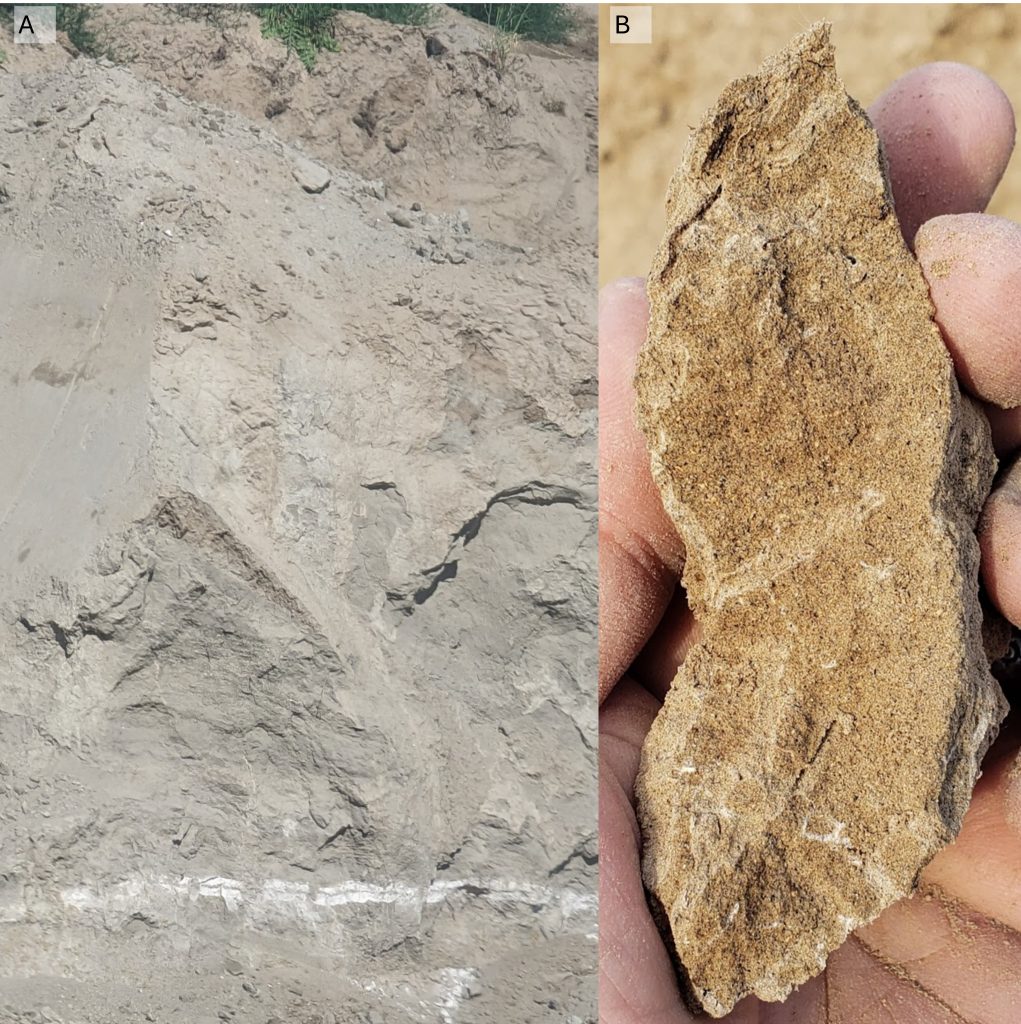
These carbonates can be identified by pouring a weak acid like vinegar on them; if they bubble, they are carbonates. In general, soil carbon is not evenly distributed in soils, where carbon tends to be more abundant closer to the vineyard soil surface[2]. We see this same trend in data from our Washington Soil Health Initiative vineyard (Fig. 2). This is because the largest carbon additions to soil often come in the form of plant waste deposited on the surface of the soil, such as cover crop clippings or other vineyard waste (e.g., dropped leaves, fruit or pruning debris). These organic sources of carbon are often consumed by microbes before they can move deeper in the soil profile (Fig. 2). For this reason, most of the carbon below 6 inches in our vineyard is SIC (Fig. 2).
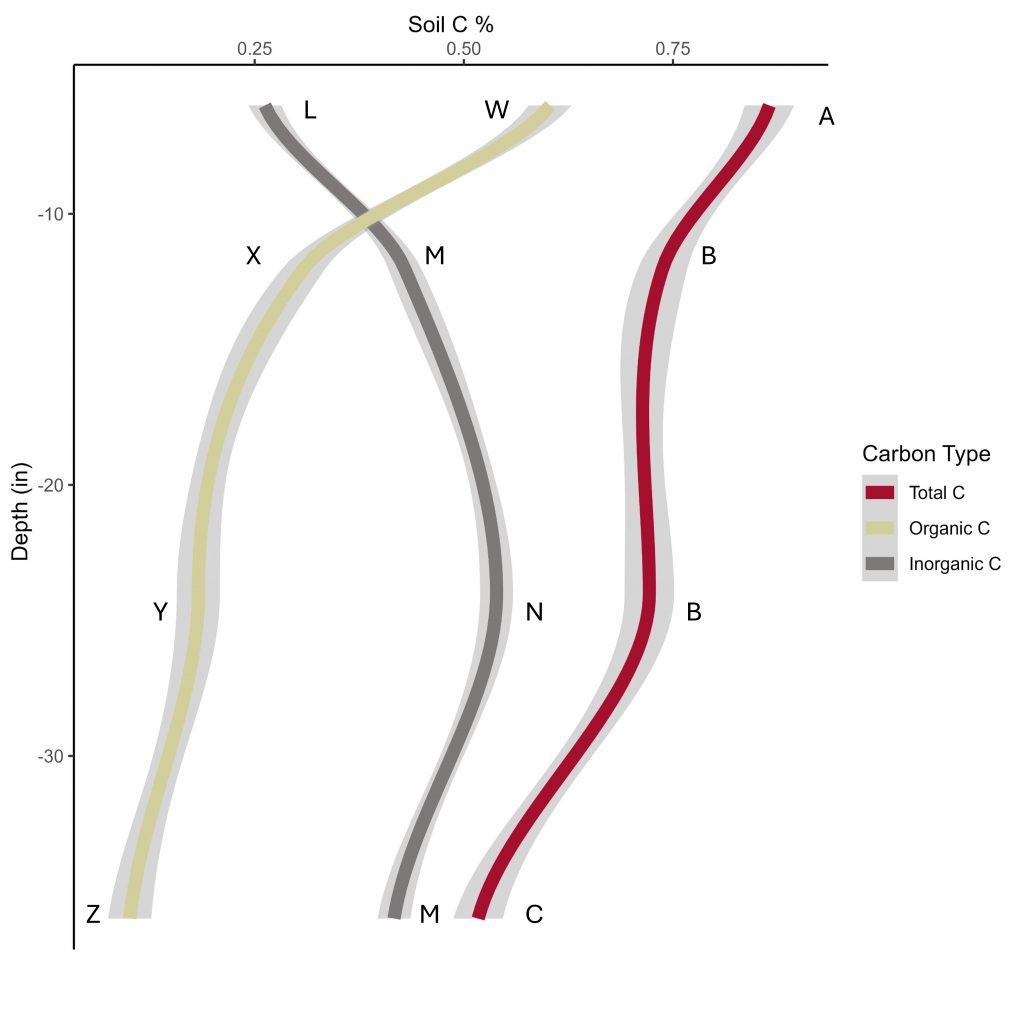
Why Soil Carbon Matters in Viticulture and How to Build It
Carbon in the soil is not directly used by plants for growth; however, both SOC and SIC serve important roles for soil health[3,4]. Building soil carbon in both forms can improve soil structure, enabling more rapid drainage and better rainfall capture, improving moisture retention, and reducing erosion. Functionally, soil carbon acts as a glue and scaffolding for soil particles and provides housing and food (SOC) for soil microorganisms. This creates an ideal rooting environment for grape plants as standing water is minimized, but there is still adequate water release for optimal plant growth during summer. Furthermore, increasing SOC can improve soil fertility, decreasing variability in nutrient availability [1].
In addition, building soil carbon, especially the SOC form, removes carbon dioxide (CO2) from the atmosphere and stores it in the soil (carbon sequestration), reducing the greenhouse effects from CO2 in the atmosphere [5]. Recently, growers are becoming more encouraged to establish carbon-building practices due to the economic benefits through government incentives, such as carbon markets. In short, it’s a win for the environment, a win for the soil, and thus a win for the vines and the grower.
Practices that can build soil organic carbon in vineyard soils include irrigation, as well as using cover crops and mulches for ground cover and compost for fertilizer[1]. Soil amendments like biochar can also increase both SIC and SOC[4]. Practices that can increase SIC include deficit irrigation and irrigation with alkaline waters, such as those often pumped from ground water[6].
Summary
- Soil carbon is vital to soil health and function.
- Soil carbon is composed of two pools, SIC and SOC. Both provide benefits to the quality and productivity of soil.
- Soil carbon is important in viticulture because it improves soil structure.
- It promotes aggregation which simultaneously improves drainage and moisture retention.
- Practices that can build soil carbon in vineyard systems include cover-crops and carbon additions in the form of a variety of organic amendments.
With this information, grape growers can better understand the carbon in their soils to make more informed vineyard management decisions.
Acknowledgments
We would like to thank the Washington Soil Health Initiative and the Washington State Wine Commission for funding. This manuscript’s contents are solely the responsibility of the authors and do not necessarily represent the official views of the USDA. The authors are grateful to Julie Tarara for thoughtful feedback.
References
- Lazcano, C, et al. 2020. Decock, C. and Wilson, S.G., 2020. DOI: 10.3389/fenvs.2020.00068
- NRCS-USDA. Web Soil Survey. Online: https://websoilsurvey.nrcs.usda.gov/app/.
- Pihlap, E., et al. 2021. DOI: 10.1016/j.geoderma.2020.114854
- Wang, Y., et al. 2023. DOI: 10.1021/acs.est.2c06419
- U.S. Geological Survey. What is carbon sequestration. Online: https://www.usgs.gov/faqs/what-carbon-sequestration.
- Entry, J.A., et al. 2004. DOI: 10.1007/s00267-003-9140-3
Research Roundup
By Melissa Hansen, Research Program Director, Washington State Wine Commission
Washington wine industry’s research portfolio has a mix of themes.
The portfolio of research projects supported through the Washington State Wine Commission is a diverse list of viticulture and enology topics. But a closer look reveals both pain points for wine grape growers and vintners as well as the industry’s vision for the future. Projects are practical and solution-based, cutting edge and innovative, and many support sustainability. But a common denominator across research is the shared dedication from the scientists and the Wine Research Advisory Committee (WRAC) to conduct impactful research that’s relevant to Washington’s wine industry.
While there are many grant programs available to fund viticulture and enology research, only two are laser-focused on Washington’s wine industry—the Washington State Grape and Wine Research Program administered by Washington State University, and the Washington State Wine Commission’s own research grant program. Both programs are competitive and depend on the twelve members of the Wine Research Advisory Committee, who serve as the industry’s research review arm. Thank you WRAC! These volunteers are appointed by the Washington State Wine Commission’s board of commissioners and meet several times each year to review stakeholder feedback on research priorities and sift through pre-proposals, full proposals, annual progress reports, and oral presentations. Research project funding recommendations are made by WRAC and approved by the Wine Commission’s board. WRAC’s recommendations are based on alignment with industry priorities, chance for success, outside funding sources, and return on investment.
The WSU V&E team works in collaboration with the Washington wine industry and WRAC to identify emerging issues and find solutions for ongoing challenges. This strong partnership is based on two-way communication and scientists are accessible to industry members.
What follows is a highlight of selected Washington State University research projects funded for 2024-25. The full list includes 17 projects and can be found at: https://www.washingtonwine.org/wp-content/uploads/2024/05/FY25ResearchProjectList.pdf .
New Projects
- Development of a Crop Protection Guide and Decision Aid System for Grapes – WSU’s Gwen Hoheisel and Michelle Moyer have teamed up in this new project to digitalize the Field Guild for Integrated Pest Management in Pacific Northwest Vineyards and the annual Pest Management Guide for Grapes in Washington. The current print guide hinders timely revisions and integration of new data. By turning this database into a website, pesticide and other management recommendations will be interactive, and in the future, grape models can be incorporated into WSU’s Decision Aid System, a program that is heavily used by tree fruit and potato growers.
- Irrigation Approaches to Prepare Vines for Winter – Markus Keller, WSU viticulturist, will study late-season irrigation strategies to optimize practices for grapevine winter survival, an area of focus that has received little research attention.
- Building Evidence-based Knowledge for Managing Grapevine Leafroll Virus – Naidu Rayapati, virologist for WSU, will continue work to better understand confounding factors that contribute to spread of grapevine leafroll virus, study whether mating disruption of grape mealybug slows the spread of leafroll, and investigate correlation between the co-infection of different viruses and spread of leafroll.
- Optimized Design and Deployment of a Phenolic Prediction Application for Fermenting and Finished Red Wines using the Software as a Service Model – Jim Harbertson, WSU enologist, builds on past research to create a model that will allow wineries to predict tannin, anthocyanin, polymeric pigments and more.
Continuing Projects
- Integrated Weed Management Options – WSU Weed Scientist Rui Lui continues her work to evaluate chemical and non-chemical methods for season-long weed management, including cultivation and electrical weeding. The project includes cost analysis of the different practices studied.
- Assessment of Risk to Grape and Wine Quality from Smoke Exposure – WSU’s Tom Collins has a multitude of smoke research projects funded through industry and federal grants. In this project, he evaluates the differences from smoke on grapes that are picked while smoke is present compared to waiting to pick after smoke has cleared. Past research has shown potential to reduce smoke effects by applying kaolin and bentonite as protective barrier sprays. He continues this work to learn how the timing, rate, removal and target zone could improve the effectiveness of these sprays.
- Creation and Mitigation of Frozen Leaf Effected Red and White Wines – Harbertson explores the impact on wine quality from grapevine leaves that have gone through frost or freezing temperatures. Fining agents he tried in a previous experiment were unsuccessful in remediating the atypical aromas, thus, he is studying reverse osmosis and ultrafiltration methods as remediation tools. The project also seeks to identify the aroma compounds of the atypical wines by gas chromatography.
- Reassessment of Free Sulfur Dioxide and Molecular Sulfur Dioxide on the Viability of Yeast and Bacteria in Wine – Hailan Piao and Thomas Henick-Kling are testing capillary electrophoresis as a more precise way to measure free sulfur dioxide during winemaking. Red wines were the focus in the first year; white wines will be studied in the second year. The research also compares the effects of pH and sulfur dioxide concentrations on inhibition of selected strains of yeast and bacteria.
- Cultural and Chemical Approaches for Sustainable Vineyard Pest Management – Moyer is developing long-term integrated pest management approaches through evaluation of nematode and phylloxera resistant rootstocks, cover crops for nematode management, canopy management in UVC-based control of grape powdery mildew and better understanding of the role of sulfur concentrations, adjuvants and the environment in phytotoxicity. Like contract fungicides, cultural practices need to be integrated with UVC to maximize its potential.
Research Outcomes
Results and outcomes from research projects are shared with Washington wine grape growers and vintners in a variety of ways:
- Research Library – Final reports from each project are posted with open access on the Washington State Wine Commission’s website (https://www.washingtonwine.org/additional-resources/). Reports are searchable by topic.

- WAVE Research Report – Research summaries and key takeaways are contained in the Wine Commission’s WAVE Research Report newsletter that is published six times per year. (WAVE stands for Washington Advancements in Viticulture and Enology.)
- WSU and the WSWC co-sponsor WAVE seminars and WAVEx webinars annually to share research outcomes and connect industry with scientists.
- WSU demonstrates research at grape field days, other events and publications – like VEEN!
- Educational sessions at WineVit often include recent research findings.
- Research articles are annually published in Good Fruit Grower and Wine Business Monthly.
- Scientists present progress reports on continuing projects and pitch new ideas at the annual Research Review. Mark your calendars for February 26-27, 2025!
We’ve made it as easy as possible to stay informed with the latest innovations. If you aren’t receiving research news, what are you waiting for? You could be missing valuable information!
Send an email to:
mhansen@washingtonwine.org to get on the research email list.
WSU Viticulture and Enology Professional Certificates
By Cody Thompson, WSU Viticulture and Enology Certificate Program Coordinator
Washington State University’s Viticulture & Enology Department offers two non-credit professional certificates tailored for those interested in careers in the grape and wine industry: the Viticulture Certificate and the Enology Certificate. These certificates are taught by Washington State University faculty and leaders in the state’s wine and grape industries.
Each certificate consists of a series of online courses over an 18-month period. The courses can be completed at the time of day that best suits your schedule—perfect for the busy professional.
Three weekend camps provide students with hands-on experience working directly with grapevines, crushing grapes, conducting lab analyses, evaluating wines, and participating in other on-site activities. They also provide networking opportunities with instructors, fellow students, and wine industry professionals. These camps are required and take place in Prosser and Richland, WA.
Self-Directed options are also available to students interested in learning more about Viticulture and Enology topics but not interested in a full certificate.
Smoke Exposure Resources
By Michelle Moyer, WSU Prosser
Washington State University
We have a complied list of resources on measuring and managing smoke-exposed fruit on our WSU Viticulture and Enology Extension website. These resources range from Air Quality Mapping tools, to grape sampling protocols, from microfermentation techniques, to a list of laboratories that provide smoke exposure evaluations of fruit and wine.
To access these resources, visit: https://wine.wsu.edu/extension/smoke-exposure/
West Coast Smoke Exposure Task Force
The West Coast Smoke Exposure Task Force has also recently launched their Smoke Exposure website. They have also worked to compile relevant resources and information from across universities, government agencies, and industry expertise. They have pages dedicated to best practices for grape production and winemaking in the face of wildfires, along with resource links to information such as crop insurance and grape contracts.
Check out the West Coast Smoke Exposure Task Force resources at: https://www.wcsetf.org/
